Trip Report – 4 November 2017 : Moa Point seaweeds
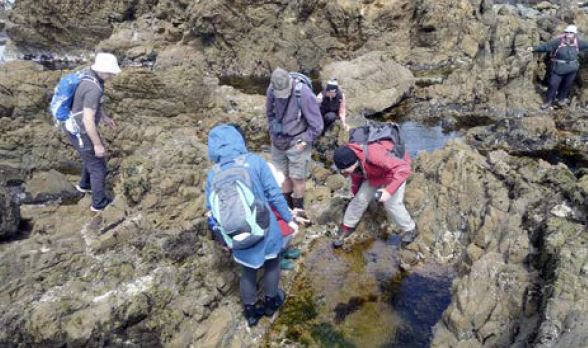 |
Intrepidly exploring the rock pools towards the southern end of Moa Point.
Photo by Gavin Dench. |
A strong northerly and the threat of showers weren’t enough to deter nearly 30 participants in the second seaweed trip of 2017. We began by using what had washed up in the drift to reacquaint ourselves with some of the common Wellington seaweed species. Interestingly, the artificial intelligence newly installed in the iNaturalist app proved to be able to identify Ecklonia radiata. We then took advantage of the low tide to cross the ‘moat’ and venture out on to the peninsula itself.
We saw several seaweed species there that we didn’t find on our March trip to Te Rae-kaihau. The habitat diversity of the former is maybe greater.
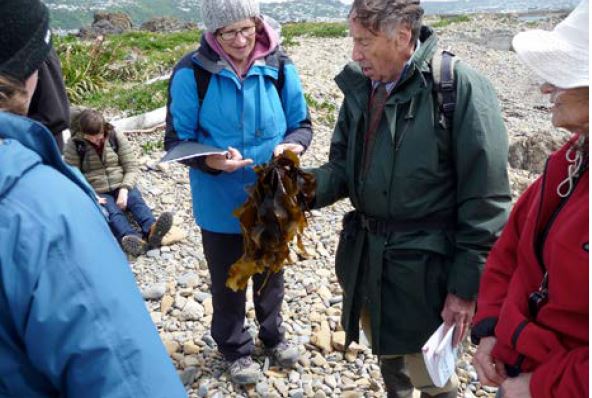 |
Alison and Rodney contemplate what looks to be the introduced and invasive brown seaweed Undaria pinnatifida. Photo by Gavin Dench. |
Thanks to Maren Preuss for her expert identifications during the trip. (It is probably worth pointing out that artificial intelligence / machinelearning approaches to identification can be useful for common, distinctive species, but they do not work well for uncommon species, or those whose differences are subtle). I encourage those keen to continue learning their seaweeds to upload photos to the iNaturalist app, or to the web site www.naturewatch.org.nz (the NZ brand of iNaturalist), and / or the Wild Plants of Wellington Facebook group. I’ll do my best to provide identifications, or to source them from experts. If anyone would like my two-page picture guide to some of Wellington’s common seaweeds, you can e-mail me at leon.perrie (at) tepapa.govt.nz.
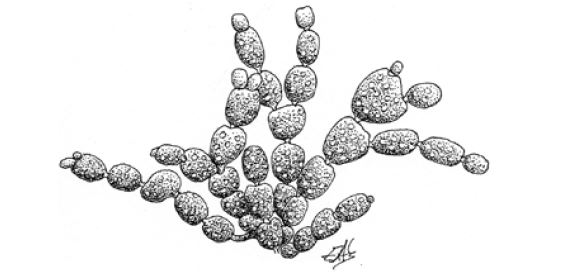 |
Hormosira banksii. Illustration: Eleanor Burton. |
In addition to its wonderful seaweeds, Moa Point is big enough to support a sizeable land-plant community. Pimelea prostrata / pinatoro / NZ daphne was in flower, as was the weedy Senecio elegans (with the stronger pink colour of the inflorescences being one of the ways to distinguish this coastal daisy from the usually weaker pink of Senecio glastifolius, which is now so common on Wellington’s hills). The makaka / Plagianthus divaricatus population was being supplemented by plantings, which appeared to be struggling. The wharariki flax (Phormium cookianum) was coming into fruit, allowing Carol to point out its distinguishing features (drooping and twisted, rather than upright and straight as in harakeke / Phormium tenax).
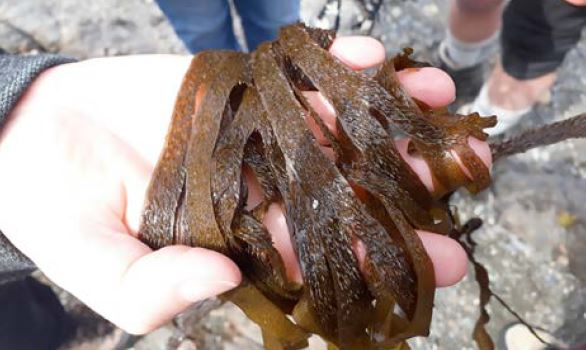 |
The brown seaweed Dictyota kunthii has a furry appearance, with its blades covered in small, tongue-like proliferations that bear its reproductive structures. |
Participants : Eleanor Burton, Ryan Burton, Gavin Dench, Flo De Ruiter, Carolyn Dimattina, Jenny Fraser, Ken Fraser, Judith Jones, Chris Horne, Jane Humble, Alison Lane, Rodney Lewington, Tom Mayo plus Megan, Lissa Mitchell and family (plus four), Leon Perrie (leader), Maren Preuss, Hugh Robertson, Lea Robertson, Terri Shaw, Darea Sherratt, Sunita Singh, Caroline Smith, Julia Stace, Carol West.
Leon Perrie.
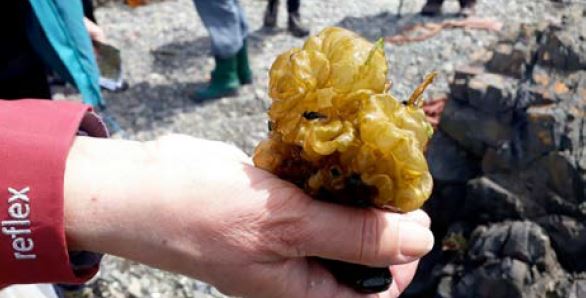 |
Comments on the appearance of this brown seaweed Colpomenia (claytoniae?) were generally not complimentary. |
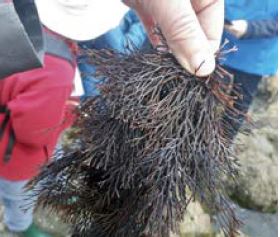 |
In contrast to the Colpomenia, the stiffly-branching architecture of the red seaweed Melanthalia abscissa was deemed attractive. |

 Site Index
Site Index







 Site Index
Site Index





